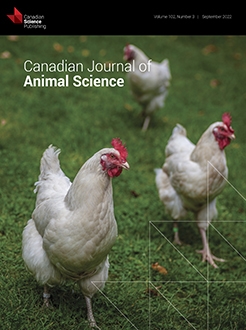A total of 2340 as-hatched Cobb500 chicks were allocated to 9 treatments, each with 13 replicate pens to evaluate the effects of either three phytase enzymes in a P-deficient diet. Starter and finisher diets consisted of a positive control (PC) and negative control 1 and 2 (NC1 and NC2, respectively). The PC, NC1, and NC2 diets had Ca:avP (available phosphorus) ratios of 0.50, 0.33, and 0.43 in the starter feed, and 0.46, 0.22, and 0.35 in the finisher feed, respectively; NC1 diets were then supplemented with Phytaverse, Quantum Blue, and Axtra-PHY at 500 and 1000 FTU/kg. Enzyme type had significant effects on body weight gain, feed conversion ratio, and production efficiency factor during the 0–7-day period. Interactions between enzyme type and inclusion levels had a significant effect on feed intake (FI) at 1–21-day (P = 0.02) and 1–35-day (P = 0.031) age. While FI decreased as Axtra-PHY inclusion levels increased from 500 to 1000 FTU/kg feed, FI increased in birds supplemented with Quantum Blue, but with no effects on Phytaverse-supplemented birds. Increasing the enzyme dose to 1000 FTU/kg feed improved bone-breaking strength but did not affect growth performance, tibia ash, Ca, or P concentration of the birds.
Un total de 2340 poussins Cobb500 éclos ont été alloués à neuf traitements, chacun avec 13 enclos répliqués pour évaluer la réponse des poulets à griller à trois enzymes phytases dans une diète déficiente en P. Les diètes de démarrage et de finition consistaient d’un témoin positif (PC — « positive control »), et témoins négatifs 1 et 2 (NC — « negative control »; NC1, NC2). Les diètes PC, NC1 et NC2 avaient des rapports Ca:P disponible (Ca:avP — « calcium:available P ») de 0,50, 0,33 et 0,43 dans la diète de démarrage; et 0,46, 0,22, 0,35 dans la diète de finition; les diètes NC1 étaient alors supplémentées de Phytaverse, Quantum Blue et Axtra-PHY à raison de 500 et 1000 FTU/kg. Le type d’enzyme a eu un effet significatif sur le gain de poids corporel, le taux de conversion alimentaire (FCR — « feed conversion ratio ») et le facteur d’efficacité de production (PEF — « production efficiency factor ») durant la période de 0 à 7 jours. Les interactions entre le type d’enzyme et les niveaux d’inclusion avaient des effets significatifs sur la consommation (FI — « feed intake ») aux jours 1 à 21 (P = 0,02) et jours 1 à 35 (P = 0,031) d’âge. Tandis que le FI diminuait avec l’augmentation des niveaux d’inclusion d’Axtra-PHY de 500 à 1000 FTU/kg d’aliments, le FI a augmenté chez les poulets ayant reçu des suppléments de Quantum Blue, et il n’y a pas eu d’effet chez les poulets ayant reçu les suppléments de Phytaverse. Augmenter la dose d’enzyme à 1000 FTU/kg d’aliments a amélioré la résistance aux fractures, mais n’a pas eu d’effet sur la performance de croissance, ni les cendres du tibia, ni les concentrations de Ca ou P des poulets. [Traduit par la Rédaction]





